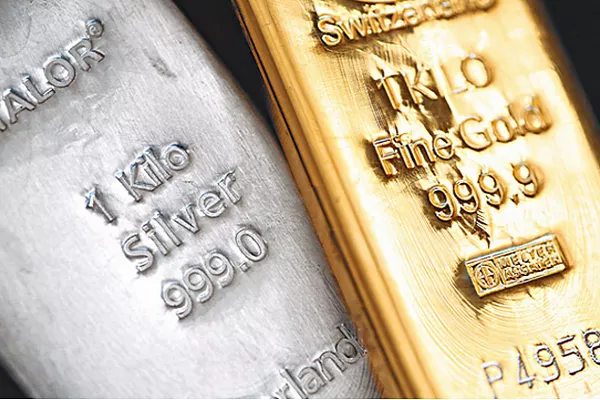The question of whether the price of gold goes up during a recession has long intrigued economists, investors, and financial analysts. Gold, often referred to as a “safe-haven asset,” has historically exhibited an inverse relationship with economic downturns. In times of economic uncertainty, gold prices tend to rise as investors seek refuge from the volatility of traditional financial markets. This article delves into the dynamics of gold prices during recessions, explores the reasons behind this trend, and examines whether this relationship still holds true in today’s complex economic landscape.
Historical Perspective
To understand the relationship between gold prices and recessions, it is essential to look at historical data. Gold has been a store of value for thousands of years and has been used as a form of currency and a hedge against economic turmoil. During past recessions, including the Great Depression of the 1930s and the Global Financial Crisis of 2008, gold prices tended to increase.
The Great Depression serves as an illustrative example. In the early 1930s, as the United States and the world faced one of the most severe economic crises in history, the price of gold saw a significant rise. People flocked to gold as a safe haven, and its value soared relative to traditional assets. This pattern repeated itself during subsequent financial crises, emphasizing gold’s role as a financial refuge in turbulent times.
Reasons Behind the Trend
Several factors contribute to the propensity of gold prices to rise during recessions:
Safe-Haven Status: Gold is often perceived as a safe-haven asset because it has intrinsic value and is not tied to any specific government or currency. Investors turn to gold when they are uncertain about the future performance of financial markets and traditional assets like stocks and bonds. This demand surge drives up its price.
Inflation Hedge: Gold is viewed as a hedge against inflation. During recessions, central banks tend to implement expansionary monetary policies, which can lead to currency devaluation and inflation. Gold’s intrinsic value remains relatively stable, making it an attractive option to protect against the erosion of purchasing power.
Diversification Benefits: Gold is an effective diversification tool in an investment portfolio. Diversifying into assets that are negatively correlated with traditional financial assets can help mitigate overall portfolio risk. This diversification appeal becomes more pronounced during economic recessions, driving demand for gold.
Geopolitical Uncertainty: Recessions often coincide with increased geopolitical tensions. Gold’s reputation as a safe haven is further reinforced during such periods. It provides protection against political and economic instability.
Supply Constraints: Gold is a finite resource, and its supply does not expand rapidly. This scarcity can drive up prices when demand surges, as it often does during recessions.
Modern Economic Realities
While historical data supports the idea that gold prices tend to rise during recessions, it is crucial to examine whether this relationship still holds true in the modern economic context. The global economy has evolved significantly since the 1930s, and the financial landscape is more interconnected and complex.
The correlation between gold prices and recessions still exists, but it may not be as straightforward as in the past. Several nuances need to be considered:
Global Interconnectedness: The modern economy is highly interconnected, with financial markets responding to events around the world in real time. This interconnectedness can lead to greater market volatility and faster shifts in asset prices. While gold remains a safe haven, its price dynamics are influenced by a multitude of factors, including international events.
Alternative Safe Havens: In addition to gold, investors now have access to a broader array of safe-haven assets, such as government bonds, cryptocurrencies, and precious metals like silver. This diversity of options means that the relationship between gold and recessions is more complex, as investors allocate their resources across different safe-haven assets.
Speculation: Speculative trading has become more prevalent in the gold market, with investors often engaging in short-term trading rather than long-term investment. This speculative activity can result in short-term price fluctuations that do not necessarily reflect the traditional safe-haven characteristics of gold.
Monetary Policy: Central banks play a more active role in shaping economic outcomes today. Their policies, including quantitative easing and low-interest rates, can impact the demand for gold. During economic recessions, central banks may implement accommodative monetary policies that impact gold prices in different ways.
Digital Gold: The rise of digital gold, in the form of gold-backed cryptocurrencies, introduces a new dimension to the gold market. These digital assets offer the convenience of cryptocurrencies while still being tied to the value of physical gold. They provide a modern alternative to traditional gold investment.
Conclusion
The historical correlation between gold prices and economic recessions remains relevant in today’s financial landscape, albeit with more complexities. Gold continues to serve as a safe haven and a hedge against economic uncertainty. However, the relationship is influenced by numerous factors, including global interconnectedness, the availability of alternative safe-haven assets, speculation, monetary policy, and the emergence of digital gold.
Investors and financial analysts should consider these nuances when assessing the role of gold in their portfolios, especially during economic downturns. While gold may still offer a level of protection, the modern investor’s toolkit has expanded, making it important to diversify and adapt strategies to navigate the ever-evolving economic environment.


